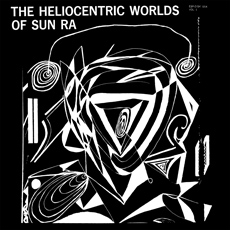| The Heliocentric Worlds of Sun Ra, Volume One | ||||
|---|---|---|---|---|
 | ||||
| Studio album by | ||||
| Released | 1965 | |||
| Recorded | April 20, 1965, RLA, New York City | |||
| Genre | Avant-garde jazz | |||
| Length | 35:07 | |||
| Label | ESP-Disk Fontana | |||
| Sun Ra chronology | ||||
| ||||
| Alternative cover | ||||
 ESP second and subsequent pressings, 1966 | ||||
| Review scores | |
|---|---|
| Source | Rating |
| All About Jazz | |
| AllMusic | |
| DownBeat | |
| The Encyclopedia of Popular Music | |
| The Penguin Guide to Jazz Recordings | |
| The Rolling Stone Jazz Record Guide | |
The Heliocentric Worlds of Sun Ra, Volume One is a 1965 album by the jazz musician Sun Ra. The back cover describes it as an "album of compositions and arrangements by Sun Ra played by Sun Ra and his Solar Arkestra".
Contents
The album is an example of the radical break which Sun Ra's music of that time had made with "previous notions of melody or harmony". [7] Although heavily percussive, the music also dispenses with a continuous beat; instead Ra's music is reconstructed around "interweaving compositional and improvisatory creative principles with programmatic affects". [8]
The album was originally released as The Heliocentric Worlds of Sun Ra, with a B/W sleeve designed by Ra himself. [9] This was replaced with a new orange and red sleeve by Howard Bernstein & Baby Jerry - showing Sun Ra with the third eye - and the appendage Vol. 1 added when The Heliocentric Worlds of Sun Ra, Volume Two was released in 1966.
The album was re-released on CD by ZYX-Music (ESP 1014-2) in the 1990s.
Gene Tyranny describes the album in his review as
The astonishing sessions that went light years beyond "free jazz" improvisation to create a music of deeply felt explosive and gentle gesture made from sound itself without reference to previous notions of melody or harmony. [10]